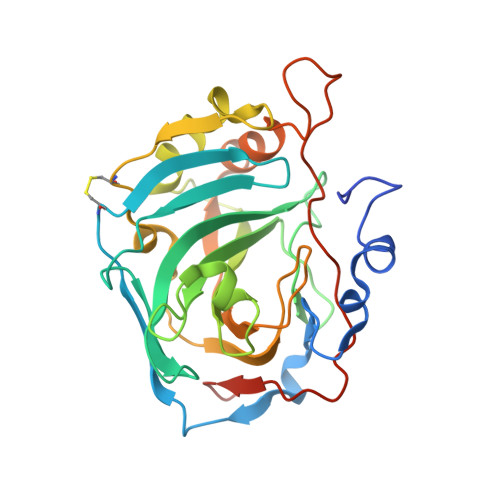The Crystal Structure of a hCA VII Variant Provides Insights into the Molecular Determinants Responsible for Its Catalytic Behavior.
Buonanno, M., Di Fiore, A., Langella, E., D'Ambrosio, K., Supuran, C.T., Monti, S.M., De Simone, G.(2018) Int J Mol Sci 19
- PubMed: 29795045
- DOI: https://doi.org/10.3390/ijms19061571
- Primary Citation of Related Structures:
6G4T - PubMed Abstract:
Although important progress has been achieved in understanding the catalytic mechanism of Carbonic Anhydrases, a detailed picture of all factors influencing the catalytic efficiency of the various human isoforms is still missing. In this paper we report a detailed structural study and theoretical pKa calculations on a hCA VII variant. The obtained data were compared with those already known for another thoroughly investigated cytosolic isoform, hCA II. Our structural studies show that in hCA VII the network of ordered water molecules, which connects the zinc bound solvent molecule to the proton shuttle His64, is altered compared to hCA II, causing a reduction of the catalytic efficiency. Theoretical calculations suggest that changes in solvent network are related to the difference in pKa of the proton shuttle in the two enzymes. The residue that plays a major role in determining the diverse pKa values of the proton shuttle is the one in position four, namely His for hCA II and Gly for hCA VII. This residue is located on the protein surface, outside of the active site cavity. These findings are in agreement with our previous studies that highlighted the importance of histidines on the protein surface of hCA II (among which His4) as crucial residues for the high catalytic efficiency of this isoform.
- Istituto di Biostrutture e Bioimmagini, CNR, Via Mezzocannone 16, 80134 Napoli, Italy. martinabuonanno@gmail.com.
Organizational Affiliation:

















